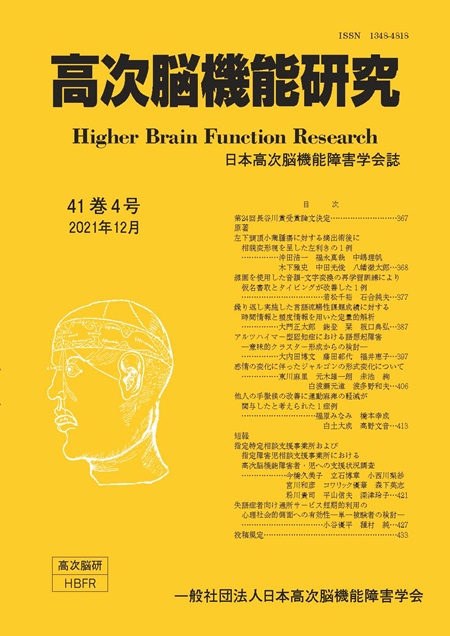Volume 41, Issue 4
Displaying 1-8 of 8 articles from this issue
- |<
- <
- 1
- >
- >|
Original article
-
2021 Volume 41 Issue 4 Pages 368-376
Published: December 31, 2021
Released on J-STAGE: July 04, 2022
Download PDF (723K) -
2021 Volume 41 Issue 4 Pages 377-386
Published: December 31, 2021
Released on J-STAGE: July 04, 2022
Download PDF (729K) -
2021 Volume 41 Issue 4 Pages 387-396
Published: December 31, 2021
Released on J-STAGE: July 04, 2022
Download PDF (781K) -
2021 Volume 41 Issue 4 Pages 397-405
Published: December 31, 2021
Released on J-STAGE: July 04, 2022
Download PDF (454K) -
2021 Volume 41 Issue 4 Pages 406-412
Published: December 31, 2021
Released on J-STAGE: July 04, 2022
Download PDF (528K) -
2021 Volume 41 Issue 4 Pages 413-420
Published: December 31, 2021
Released on J-STAGE: July 04, 2022
Download PDF (685K)
Brief report
-
2021 Volume 41 Issue 4 Pages 421-426
Published: December 31, 2021
Released on J-STAGE: July 04, 2022
Download PDF (421K) -
2021 Volume 41 Issue 4 Pages 427-432
Published: December 31, 2021
Released on J-STAGE: July 04, 2022
Download PDF (419K)
- |<
- <
- 1
- >
- >|
